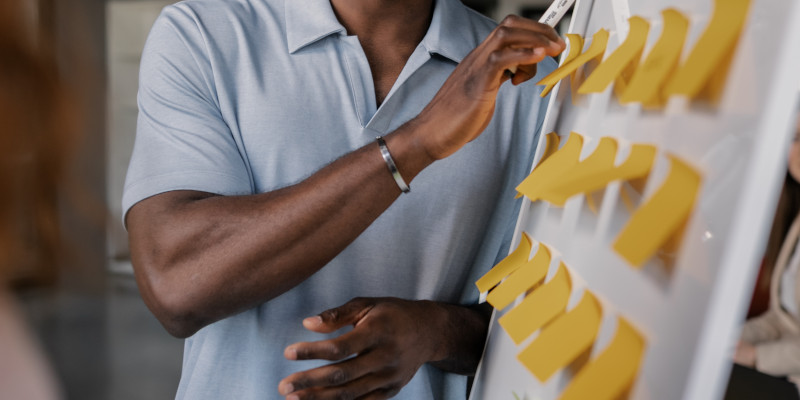 How to lead an affinity exercise
How to lead an affinity exercise
Leadership often involves working with large groups. Use these lessons to identify the top priorities from a large gathering.
If your job is to provide leadership to an IT organization, that leadership often involves working with large groups. You might lead a governance group, or you might meet with your IT organization as part of a larger meeting. I find it’s best to leverage these meeting opportunities to caucus for new ideas. This is also an opportunity to prompt a change discussion.
To leverage a large group discussion to identify new ideas, I rely on an Affinity exercise. Here’s how I do it:
Start with a question
First, break the room into smaller groups. I find the best group size is about five people.
Start with a clearly identified question. I suggest asking “What are one or two things we might do differently to make our work easier or better?” Allow the room to take a few minutes on their own to think about the question and jot down their ideas on slips of paper, one idea per slip of paper. I usually limit each person to five slips of paper. You might have more than five ideas, but you need to limit yourself to your top five ideas.
Each group identifies their top three
Give the room ten minutes or so to come up with ideas, then set each group to discuss the ideas. Every person should briefly share each of their ideas with their group, and the group picks the top three ideas.
Set the expectation that groups will work together to share ideas, build on them, and identify their top ideas or priorities. Working together like this can be a new experience in some organizations, especially if the group has never experienced this style of open leadership before.
The goal of this step in the exercise is for each group to share ideas, build on them, and agree to their top priorities or recommendations. Each group should write their ideas on easel sheets, one idea per easel sheet. I usually limit the groups to three easel sheets, asking that each group limit their recommendations to their top three ideas.
Share with the room
When the groups have consolidated their best ideas, go around the room and have each small group present their top three ideas. I find these Affinity exercises are the most successful when someone from each group shares their three easel sheets and represents them to the room. By sharing in this way, folks can "take ownership" while also relying on the group to back them up.
After everyone has presented their easel sheets, ask participants to help arrange the ideas into themes or groups of related ideas. I find these exercises generate a lot of overlap, and breaking the ideas into themes is a great way to consolidate.
Everyone has a voice
I've led these Affinity discussions with large and small groups. It's always interesting to see how ideas come together, and how the group can quickly identify their top priorities. In any small group, you might have five people and fifteen slips of paper. But many of those ideas will overlap. Small groups usually don't have an issue agreeing to their top three ideas.
In a large room of 100 people, you could have 20 groups of five people. In theory, those 20 groups might generate 60 different top priorities. Again, the ideas tend to overlap. When I led an Affinity exercise in a room of 100 people, we identified a dozen top priorities. The breakout groups shared the same ideas - and when we brought the room together to share our results, we combined similar ideas to more fully develop them.
Congratulations, you have successfully polled a large group to identify priorities or themes! And everyone worked together. Everyone had a voice.
This style of leadership leads from the bottom up, also called an open organization, leveraging the ideas that are in the room to identify priorities and agree to next steps.
